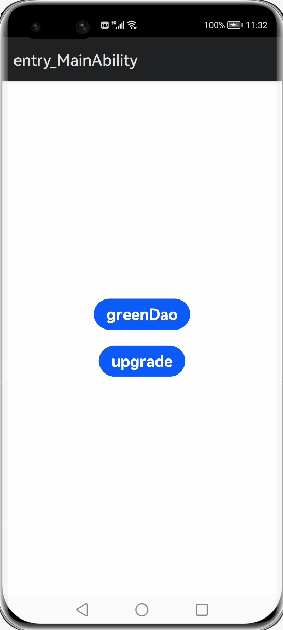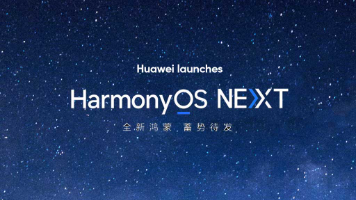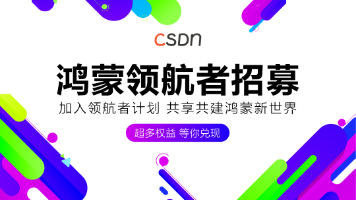OpenHarmony 关系映射数据库—dataORM
dataORM 是一个轻量级 ORM(对象关系映射)库,用于简化本地数据库的操作。提供了高效的数据库访问性能和低内存消耗。dataORM 支持多线程操作、链式调用、备份、升级、缓存等特性等功能。其设计理念是轻量、快速且易于使用,帮助开发者快速构建高性能的应用程序。
简介
dataORM 是一个轻量级 ORM(对象关系映射)库,用于简化本地数据库的操作。提供了高效的数据库访问性能和低内存消耗。dataORM 支持多线程操作、链式调用、备份、升级、缓存等特性等功能。其设计理念是轻量、快速且易于使用,帮助开发者快速构建高性能的应用程序。
效果展示

下载安装
ohpm install @ohos/dataorm --save
OpenHarmony ohpm 环境配置等更多内容,请参考如何安装 OpenHarmony ohpm 包
使用说明
- 创建实体类,如Note
import { Id } from '@ohos/dataorm';
import { NotNull } from '@ohos/dataorm';
import { Entity, Columns } from '@ohos/dataorm';
import { Unique } from '@ohos/dataorm';
import { Index } from '@ohos/dataorm';
import { ToMany } from '@ohos/dataorm';
import { ColumnType } from '@ohos/dataorm';
import { ToOne } from '@ohos/dataorm';
@Entity('NOTE')
export class Note {
@Id()
@Columns({ columnName: 'ID', types: ColumnType.num })
id: number;
@NotNull()
@Unique()
@Index(true)
@Columns({ columnName: 'TEXT', types: ColumnType.str })
text: string;
@Columns({ columnName: 'COMMENT', types: ColumnType.str })
comment: string;
@Columns({ columnName: 'DATE', types: ColumnType.str })
date: Date;
@Columns({ columnName: 'TYPE', types: ColumnType.str })
type: string;
@Columns({ columnName: 'MONEYS', types: ColumnType.real })
moneys: number;
//todo 类中必须在constructor中声明所有非静态变量,用于反射生成列
constructor(id?: number, text?: string, comment?: string, date?: Date, types?: string, moneys?: number) {
this.id = id;
this.text = text;
this.comment = comment;
this.date = date;
this.type = types;
this.moneys = moneys;
}
getMoneys(): number {
return this.moneys;
}
setMoneys(moneys: number) {
this.moneys = moneys;
}
getId(): number {
return this.id;
}
setId(id: number) {
this.id = id;
}
getText(): string {
return this.text;
}
/** Not-null value; ensure this value is available before it is saved to the database. */
setText(text: string) {
this.text = text;
}
getComment(): string {
return this.comment;
}
setComment(comment: string) {
this.comment = comment;
}
getDate(): Date {
return this.date;
}
setDate(date: Date) {
this.date = date;
}
getType(): string {
return this.type;
}
setType(types: string) {
this.type = types;
}
}
注解对外开放部分:Column、Entity、Id、NotNull、Unique、Index、ToMany、ToOne、JoinEntity、OrderBy、Convert、Embedded、Transient。
可使用注解使用示例及说明:
(1)Id的使用:
1、导入引用
import {Id} from '@ohos/dataorm';
2、使用方式:
A、
@Id()
id: number;
B、
@Id({ isPrimaryKey: true ,autoincrement:false})
id: number;
说明:在类属性中使用,定义表主键和键值是否是自增长。A和B的定义方式等同,isPrimaryKey值为true(是表主键),autoincrement值为false(不为自增长)
(2)Entity的使用:
1、导入引用
import {Entity} from '@ohos/dataorm';
2、使用方式:
@Entity('NOTE')
export class Note {}
说明:在类头使用,定义表表名,如该示例定义为表名为NOTE。
####(3)Column的使用:
1、导入引用
import {Columns} from '@ohos/dataorm';
2、使用方式:
@Columns({ columnName: 'ID', types: ColumnType.num })
text: string;
说明:在类属性中使用,定义在表中的列名和列类型。第一个参数为列名,第二个参数为列的数据类型
(4)NotNull的使用:
1、导入引用
import {NotNull} from '@ohos/dataorm';
2、使用方式:
A、
@NotNull()
text: string;
B、
@NotNull(true)
text: string;
说明:在类属性中使用,定义在表中该列是否可空,当为true值时,在表中该列值为非空值。其中A和B的定义方式等同,该列为非空值。
####(5)Unique的使用:
1、导入引用
import {Unique} from '@ohos/dataorm';
2、使用方式:
A、
@Unique()
text: string;
B、
@Unique(true)
text: string;
说明:在类属性中使用,定义在表中该列是否是唯一值,当为true值时,在表中该列值为唯一值。其中A和B的定义方式等同,该列为唯一值。
####(6)Index的使用:
1、导入引用
import {Index} from '@ohos/dataorm';
2、使用方式:
A、
@Index()
text: string;
B、
@Index(true)
text: string;
c、
@Index(false)
text: string;
说明:在类属性中使用,定义创建索引表的列以及是否是唯一,当为true值时,为唯一。其中A定义为非唯一索引,B的定义为唯一索引,C定义为非唯一索引.A和C的定义等同。
####(7)ToMany的使用
1、导入引用
import { ToMany } from '@ohos/dataorm';
2、使用方式:
@ToMany({ targetClsName: "Student", joinProperty: [{ name: "ID", referencedName: "TID" }] })
@OrderBy("NAME ASC")
students: Array<Student>
说明:在类属性中使用,定义了目标关系表 targetClsName, 当前要查询的列 name 与外部目标表关联的列名 referencedName ,其中的name的值是目标referencedName的值 , 返回的是目标的表的对象数组。
调用时方式:
async queryByToManyFunctionTest() {
this.daoSession = GlobalContext.getContext().getValue("daoSession") as DaoSession;
this.studentDao = this.daoSession.getBaseDao(Student);
var teacherId: string[] = ["1"]
let data = await this.studentDao.queryToManyListByColumnName("students", teacherId)
data.forEach(element => {
console.info("-----tonMany-----" + JSON.stringify(element))
});
}
说明: 获取目标表的Dao , 调用queryToManyListByColumnName(toManyColumnName: string, arr: string[]), 传入参数toManyColumnName为当前表所创建类的@ToMany下面的变量名,传入参数arr为关联列的查询值。
(8)JoinEntity的使用
1、导入引用
import { JoinEntity } from '@ohos/dataorm';
2、使用方式
@JoinEntity({ entityName: 'JoinManyToDateEntity', targetClsName: 'DateEntity', sourceProperty: 'ID_TO_MANY', targetProperty: 'ID_DATE' })
@OrderBy("ID DESC")
dateEntityList: Array<DateEntity>
说明:在类属性中使用,定义了联接表之间的关系, entityName 为链接表的实体类名称, targetClsName 目标表的实体类, sourceProperty为连接实体中包含源(当前)实体id的属性的名称 ,targetProperty 为连接实体中包含目标实体id的属性的名称 , 返回的是目标的表的对象数组。
调用时方式:
async queryByJoinEntityFunctionTest(){
this.daoSession = GlobalContext.getContext().getValue("daoSession") as DaoSession;
this.studentDao = this.daoSession.getBaseDao(DateEntity);
var teacherId: string[] = ["11"]
let data = await this.studentDao.queryToManyListByColumnName("dateEntityList", teacherId)
data.forEach(element => {
console.info("-----JoinEntity-----" + JSON.stringify(element))
});
}
说明: 获取目标表的Dao , 调用queryToManyListByColumnName(toManyColumnName: string, arr: string[]), 传入参数toManyColumnName为当前表所创建类的@ToMany下面的变量名,传入参数arr为关联列的查询值。
####(9)ToOne的使用
1、导入引用
import { ToOne } from '@ohos/dataorm';
2、使用方式
@ToOne({ value: 'TID', targetObj: Teacher })
teacher: Teacher
说明:在类属性中使用,定义了当前表 value为关联的列,targetObj 为关链创建的表的类。
调用时方式:
A、
async loadDeep() {
this.daoSession = GlobalContext.getContext().getValue("daoSession") as DaoSession;
this.studentDao = this.daoSession.getBaseDao(Student);
let studentId = 1
let student: Student = await this.studentDao.loadDeep(studentId);
}
B、
async queryByToOneFunctionTest() {
this.daoSession = GlobalContext.getContext().getValue("daoSession") as DaoSession;
this.studentDao = this.daoSession.getBaseDao(Student);
let columnName = this.studentDao.getPkProperty().columnName
let entityList = await this.studentDao.queryDeep("WHERE T." + columnName + "=?", ["1"]);
let entity3: Student = entityList[0];
}
说明: 获取目标表的Dao,拼接查询Sql 作为queryDeep(where: string, selectionArg: string[])的参数去查询。
####(10)Convert的使用
1、导入引用
import { Convert } from '@ohos/dataorm';
2、使用方式
@Convert({ converter: TypeConvert, columnType: ColumnType.str })
images: ArrayList<string>;
说明:在类属性中使用,将对应的属性的集合或者数组,在数据库中存储与取出的操作,@Convert其参数说明:converter:继承PropertyConverter实体,实现其抽象方法;columnType:对应存储到数据库中的类型
PropertyConverter方法介绍:
| 接口名 | 功能描述 |
|---|---|
| convertToEntityProperty(databaseValue: Q): P | 将数据库数据转化成对应的集合或者数组 |
| convertToDatabaseValue(entityProperty: P): Q | 将对象实体中集合或者数组数据转换为数据库存储的类型 |
####(11)Transient的使用
1、导入引用
import { Transient } from '@ohos/dataorm';
2、使用方式
@Transient()
home: string
说明:Transient注解修饰的属性不会映射到数据库中
####(12)Embedded的使用
1、导入引用
import { Embedded } from '@ohos/dataorm';
2、使用方式
@Embedded({ prefix: "f_", targetClass: Father })
father: Father
说明:Embedded注解:数据实体嵌套的功能,其参数说明,prefix:实体中对应数据库中列名的前缀定义,targetClass:对应嵌套的实体
1. 非加密库在AbilityStage.ts进行初始化
let helper: ExampleOpeHelper = new ExampleOpenHelper(this.context, "notes.db");
helper.setEntities(Note);
let db: Database = await helper.getWritableDb();
this.data.daoSession = new DaoMaster(db).newSession();
2. 加密库在AbilityStage.ets进行初始化
let helper: ExampleOpenHelper = new ExampleOpenHelper(context, "notes.db");
//设定数据加密密钥,加密后不可变更,加密和非加密库暂不能切换(普通数据库不能在设定为加密库,加密库不能变更为普通库,一经生成不可变更)
helper.setEncrypt(true);
//将所有的表 (新增,修改,已存在)加到全局
helper.setEntities(Note);
let db: Database = await helper.getWritableDb();
this.data.daoSession = new DaoMaster(db).newSession();
3. 获取daoSession和Dao对象:在调用页面,如demo中的index页中
private aboutToAppear() {
daoSess = GlobalContext.getContext().getValue("daoSession") as DaoSession;
that.daoSession = daoSess;
noteDaos = that.daoSession.getBaseDao(Note);
}
4. 添加和移除监听
/*
*监听
*/
private tabListener(): OnTableChangedListener<any>{
let that = this;
return {
async onTableChanged(t: any, err, action: TableAction) {
if (action == TableAction.INSERT) {
await that.updateNotes();
} else if(action == TableAction.UPDATE){
await that.updateNotes();
} else if(action == TableAction.DELETE){
await that.updateNotes();
} else if (action == TableAction.QUERY) {
}
}
}
}
/*
*添加监听
*/
noteDaos.addTableChangedListener(that.tabListener());
/**
* 移除监听
*/
noteDaos.removeTableChangedListener();
5. 数据库操作
//新增
let date = new Date()
let comment = "Added on " + date.toLocaleString();
let note = new Note();
note.setText(this.noteText);
note.setComment(comment);
note.setDate(new Date());
note.setType(NoteType[NoteType.TEXT]);
noteDaos.insert(note);
//查询
let entityClass = GlobalContext.getContext().getValue(GlobalContext.KEY_CLS) as Record<string, Object>;
let properties = entityClass.Note as Record<string, Property>;
let notesQuery = that.noteDao.queryBuilder().orderAsc(properties.text).build();
this.arr = await this.notesQuery.list();
或者
let entityClass = GlobalContext.getContext().getValue(GlobalContext.KEY_CLS) as Record<string, Object>;
let properties = entityClass.Note as Record<string, Property>;
let query = this.noteDao.queryBuilder().orderAsc(properties.text).buildCursor();
let a = await query.list();
//删除
let entityClass = GlobalContext.getContext().getValue(GlobalContext.KEY_CLS) as Record<string, Object>;
let properties = entityClass.Note as Record<string, Property>;
let deleteQuery = this.noteDao.queryBuilder().where(properties.text.eq("bbb"))
.buildDelete();
deleteQuery.executeDeleteWithoutDetachingEntities()
6.实体继承
您可以通过使用实体继承模式降低代码编写的冗余度,实现代码的重用,提高程序的可维护性。
1、定义一个基类,把公共属性放在基类中,并使用 @Columns 标记。
import { Columns, ColumnType } from '@ohos/dataorm';
export class TableBasic {
@Columns({ columnName: "CREATETIME", types: ColumnType.str })
createTime: string;
getCreateTime(): string {
return this.createTime;
}
setCreateTime (createTime: string) {
this.createTime = createTime;
}
constructor(createTime?: string) {
this.createTime = createTime;
}
}
2、在需要的业务实体中继承基类。
/**
* Entity mapped to table "NOTE".
*/
import { Columns, ColumnType, Entity, Id, NotNull } from '@ohos/dataorm'
import { TableBasic } from './test/TableBasic'
@Entity("NOTE", [{ value: "text, date DESC", unique: true }])
export class Note extends TableBasic {
@Id()
@Columns({ columnName: "ID", types: ColumnType.num })
id: number
@NotNull()
@Columns({ columnName: "TEXT", types: ColumnType.str })
text: string
@Columns({ columnName: "COMMENT", types: ColumnType.str })
comment: string
@Columns({ columnName: "DATE", types: ColumnType.str })
date: string
@Columns({ columnName: "TYPE", types: ColumnType.str })
type: string
@Columns({ columnName: "MONEYS", types: ColumnType.real })
moneys: number
constructor(
id?: number,
text?: string,
comment?: string,
date?: string,
types?: string,
moneys?: number,
createTime?: string,
) {
super(createTime)
this.id = id
this.text = text
this.comment = comment
this.date = date
this.type = types
this.moneys = moneys
}
}
通过上述示例,得到的NOTE实例中就可以继承createTime属性。
接口说明
接口准备
// regular SQLite database
let helper: ExampleOpenHelper = new ExampleOpenHelper(this.context, "notes.db");
//设定数据加密密钥,加密后不可变更,加密和非加密库暂不能切换(普通数据库不能在设定为加密库,加密库不能变更为普通库,一经生成不可变更)
helper.setEncrypt(true);
//将所有的表(新增,修改,已存在)加到全局
helper.setEntities(Note, Student, Teacher, JoinManyToDateEntity, DateEntity);
let db: Database = await helper.getWritableDb();
- 新增
noteDao.insert(note) - 修改
noteDao.update(note) - 删除
noteDao.delete(note) - 主键删除
noteDao.deleteByKey(id) - 条件删除
noteDao.queryBuilder().where(properties['text'].eq("bbb")).buildDelete() - 查询
noteDao.queryBuilder().list() - 条件查询
noteDao.queryBuilder.whereOr(properties['text'].eq("aaa"), properties['text'].eq("bbb"), properties['text'].eq("ccc")).list() - 缓存查询
noteDao.load(id) - 更新数据,通过从数据库重新加载值来重置实体的所有本地更改的属性
noteDao.refresh(note) - 链式查询
new inquiry().from(Note).query(Note).then((data) => { if(data)this.arr = data; }) - 链式条件查询
inquiry().from(Note).eq("ID", 2).querySingle(Note).then((data) => {if(data) this.arr = data; }) - 添加监听
noteDao.addTableChangedListener() - 移除监听
noteDao.removeTableChangedListener() - 保存(无则新增,有则更新)
noteDao.save(note) - 备份数据库
Migration.backupDB(dbName, tableName, version, context) - 升级数据库
migration.execute(context) - 数据库从资源文件导入数据
executeSqlScript(resourceMgr: any, db: Database, rawFilename: string) - 原始sql语句查询
rawQueries(sql: string, selectionArgs: Array<any>) - ToMany 查询
queryToManyListByColumnName(toManyColumnName: string, arr: string[]) - JoinEntity
queryToManyListByColumnName(toManyColumnName: string, arr: string[]) - ToOne 查询
queryDeep(where: string, selectionArg: string[])
单元测试用例详情见TEST.md
约束与限制
-
DevEco Studio: 4.1 Release(4.1.3.317), SDK: API11 (4.1.0.36)
-
DevEco Studio: 4.0 Release(4.0.3.513), SDK: API10 (4.0.10.10)
-
DevEco Studio 版本:4.0 Release(4.0.3.418),OpenHarmony SDK:(4.0.10.6)
目录结构
|---- dataORM
| |---- entry # 示例代码文件夹
| |---- library # dataORM库文件夹
| |----annotation # 注解相关
| |----common # 公用类包
| |----converter # convert注解辅助
| |----database # 数据库相关
| |----dbflow # 链式查询
| |----base # 链式封装
| |----listener # 监听回调
| |----identityscope # 缓存相关
| |----internal # 内部调用文件
| |----query # 查询
| |---- index.ts # 对外接口
| |---- README.MD # 安装使用方法
为了能让大家更好的学习鸿蒙(HarmonyOS NEXT)开发技术,这边特意整理了《鸿蒙开发学习手册》(共计890页),希望对大家有所帮助:https://qr21.cn/FV7h05
《鸿蒙开发学习手册》:
如何快速入门:https://qr21.cn/FV7h05
- 基本概念
- 构建第一个ArkTS应用
- ……

开发基础知识:https://qr21.cn/FV7h05
- 应用基础知识
- 配置文件
- 应用数据管理
- 应用安全管理
- 应用隐私保护
- 三方应用调用管控机制
- 资源分类与访问
- 学习ArkTS语言
- ……

基于ArkTS 开发:https://qr21.cn/FV7h05
- Ability开发
- UI开发
- 公共事件与通知
- 窗口管理
- 媒体
- 安全
- 网络与链接
- 电话服务
- 数据管理
- 后台任务(Background Task)管理
- 设备管理
- 设备使用信息统计
- DFX
- 国际化开发
- 折叠屏系列
- ……

鸿蒙开发面试真题(含参考答案):https://qr18.cn/F781PH

鸿蒙开发面试大盘集篇(共计319页):https://qr18.cn/F781PH
1.项目开发必备面试题
2.性能优化方向
3.架构方向
4.鸿蒙开发系统底层方向
5.鸿蒙音视频开发方向
6.鸿蒙车载开发方向
7.鸿蒙南向开发方向

更多推荐
 已为社区贡献40条内容
已为社区贡献40条内容









所有评论(0)